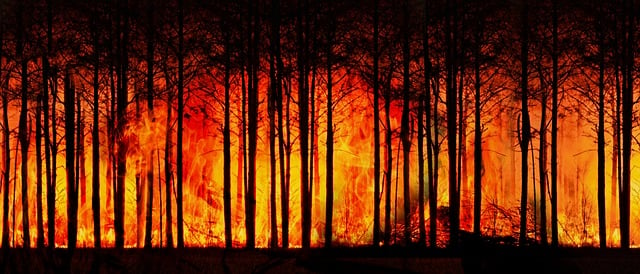Ontario, the (covered up) climate report is scary
TORONTO – A new report commissioned by the government of Premier Doug Ford – but somehow “covered up” by the government itself – warns that climate change poses high risks for Ontario, with impacts on everything from food production to infrastructure and businesses. The report – called the Provincial Climate Change Impact Assessment and carried out by a team of researchers from the Sudbury-based Climate Risk Institute – predicts an increasing number of days with extreme heat across Ontario, as well as an increase in flooding and fires.
Submitted to the provincial government in January but only released publicly in late August, in silence (the government itself issued no press release on the report), it follows a summer in which Ontarians faced extreme heat, severe thunderstorms and above all the smoke from fires.
The report’s 530 pages are filled with often grim details about the expected effects of climate change in Ontario. Here are some of the most significant steps: the agricultural sector faces risks of “declining productivity, crop failure and livestock mortality”; “most Ontario businesses will face increased risks from climate change”; “Climate risks are highest among Ontario’s most vulnerable populations and will continue to amplify existing disparities and inequalities.”
“The impacts [of climate change] are very clear right now, they’re very, very strong and quite severe, and they’re expected to continue into the future,” said Al Douglas, president of the Climate Risk Institute, in an interview with CBC.
To arrive at their findings, the researchers used historical climate data with information on the consequences of extreme weather events and projections of future climate trends, and predict that a projected increase in the number of days with extreme heat – 30 degrees and above – will impact the Ontario’s growing seasons, business and human health. According to the report, by 2080, southern, central and eastern Ontario will average 55-60 days of extreme heat per year, a nearly fourfold increase from the current annual average of about 16 days. Northern Ontario, which experiences an average of 4 days of extreme heat per year, is also expected to see up to 35 such days each year.
“Changes in Ontario’s climate are expected to continue at unprecedented rates,” the report says. “It is important to recognize how these findings can be used to spur action to protect residents, ecosystems, businesses and communities across Ontario.”
Ontario’s food production and agriculture appear to be particularly at risk, vulnerable to climate change. “Yields will decline,” Douglas said – . The heat will affect the overall health of livestock. It will pose indirect threats to things like water availability and quality. It will have an indirect impact on soil health and quality.”
The report analyzes different risks to various parts of Ontario’s $45 billion agricultural sector, including a potential 50 per cent drop in corn production due to inadequate moisture or high risks to corn crops. apples due to late spring frosts, extreme precipitation, or extreme heat.
“I hope the report and findings spur further action,” Douglas said. “Everyone has to play a part in this because of the magnitude of the issue.”
Foto di Gerd Altmann da Pixabay




